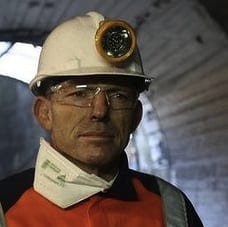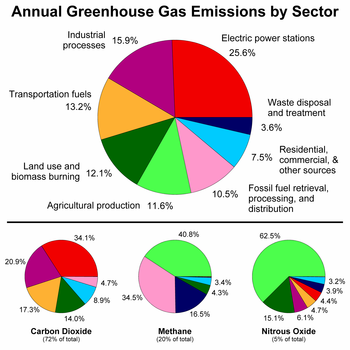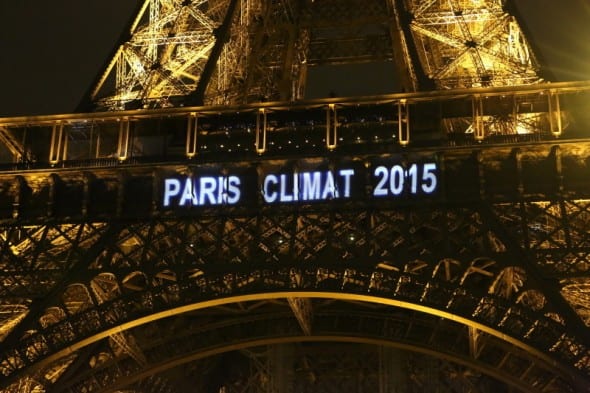
b
y Giles Parkinson, Renew Economy:
http://reneweconomy.com.au/2015/beginning-of-the-end-for-fossil-fuels-panic-sweeps-global-markets-11700
Well,
we can’t say we weren’t warned. Panic selling swept major global
stock-markets on Tuesday in what could be a foretaste of things to come,
as investors suddenly woke up to the fact that the game has changed.
Fossil fuels and their associated investments are in decline, and the
world is heading rapidly towards new and cleaner technologies.
A bunch of big stories this week highlight what is going on: VW,
Shell, Glencore, BHP, Origin Energy and AGL. All linked by a common
thread - their exposure to fossil fuels. It prompted a warning on the
financial risks of climate change by Mark Carney, the governor of the
Bank of England.
The biggest news, of course, was VW. As
we reported on Monday,
the VW cheating scandal, where it sought to defraud regulators and
millions of consumers on a massive scale over the level of its diesel
car emissions, could likely signal the demise of the diesel engine.
But
it could go further than that: it could see the rapid demise of the
petrol engine too, and the use of fossil fuels in passenger vehicles
altogether.
As more diesel car manufacturers came under scrutiny overnight, Fitch
Ratings, an international credit agency, said the dominance of the
internal combustion engine could come under pressure from a fundamental
change in consumers and regulators’ attitude toward emissions and fuel
efficiency.
“The Volkswagen scandal could therefore accelerate the underlying
growth of vehicles with alternative powertrains, including fuel cells,
electric and hybrid engines,”
it said in a new report. That means the demise of both petrol and diesel cars, and the emergence of electric vehicles.
This is what the stock market is already telling us: Overnight, VW - a
bastion of the Germany economy and the “made in Germany” brand, lost
another 4% of its value, taking its total decline in the past
fortnight to 44%, or more than $A50 billion.
The world’s biggest car-maker is still worth around $A72 billion, but as
Alex Pollak writes in the SMH, it has $200 billion in liabilities, backed by the value of their vehicles. Those values are now under question.
Meanwhile, the share price of Tesla, the upmarket electric vehicle
manufacturer that has become one of the world’s most valuable brand
names, despite producing a fraction of the number of vehicles than its
bigger rivals, is now worth $A44 billion.
The market is telling us a similar story about the coal industry. The
plunge in the value of the world’s biggest non-government coal miner,
Peabody Coal, has been well documented. It is down more than 90%
in the past year, but even this fact hadn’t quite registered with the
mainstream investor.
That was until this week, with the release of an Investec analyst’s
report on Glencore that suggests that its equity value could be nil, and
its Australian coal export business worthless. Others pointed to
Glencore as potentially the commodity equivalent of Lehmann Bros.
Glencore and Peabody are particularly vulnerable because, like other
companies, they are essentially financial constructs. Glencore in
particular is a corporate put together by some very clever financiers.
But when finance is leveraged at the top of the market, collapsing
commodity prices can prove terminal for highly geared global structures.
As Greenpeace analyst Marina Lou
writes in EnergyDesk,
when Glencore purchased Xstrata two years ago in the biggest mining
merger ever, chief executive Ivan Glasenberg commented, “To really
screw this up, the coal price has got to really tank.”
Well it did. And many had predicted exactly that.
“Most coal companies did top of the cycle peak priced multi-billion
dollar debt funded acquisitions, including Peabody, Glencore, Adani
Enterprises,” adds Tim Buckley, from IEEFA. “These strategic errors have
come back to haunt their shareholders with crippling share price
declines.
The dramatic fall in Glencore - already down 77% in a year -
in turn triggered a slump in energy stocks, in which Australian gas
companies such as Origin Energy and Santos were hit particularly hard.
Why? Because there is a real question - following the fall in
international oil prices - about whether the $200 billion invested in
LNG export projects will ever deliver suitable returns.
Origin Energy, whose share price has slumped more than half in less
than a year, announced it would raise $2.5 billion in a heavily
discounted share offer (25%), to shore up its balance sheet. It
said it had to act quickly to ensure debt remained at sustainable
levels.
As if on cue, Shell abandoned its search for oil in the Arctic. As Karel Beckman writes today,
Shell is dumping the idea because of the “high costs” of the project, and the chance that regulators and governments might crack down on the idea.
As Beckman points out, neither of these can have come as a surprise. Critics
have been warning for
a long time that the costs of Alaskan drilling are prohibitive, and the
“regulatory environment” in this part of the world will inevitably be
unpredictable. Still, Shell went ahead and dropped $A2 billion on the
idea.
And as
HSBC
and others have pointed out, it is not the only asset that is likely to
be stranded. At current prices, trillions of dollars ($30 trillion in
fact) of fossil fuel reserves will not be economic, and not exploited.
The market has been given the numbers, it just seems that it is only now
that it is paying attention.
Far from being peopled by “lefties” and “greenies”, many of these
think-tanks have hired leading financial analysts and investment
bankers, dumped by their international institutions because green
research wasn’t making them enough money.

Their
research has been ridiculed by vested interests in the mining industry,
particularly the Minerals Council of Australia, and the ideologues
within Australia’s Coalition government.
But last night they were
endorsed by the Bank of England’s Carney, who warned that investors face
“potentially huge” losses from climate change action that could make
vast reserves of oil, coal and gas “literally unburnable”.
Carney focused on the “carbon budget” - a concept promoted by
Australia’s Climate Change Authority, Carbon Tacker and others, but
ignored by the Coalition government and most in the fossil fuel
industry. It suggests that only one fifth to one third of the world’s
proven reserves of oil, gas and coal could be safely exploited.
“If that estimate is even approximately correct it would render the
vast majority of reserves ‘stranded’ - oil, gas and coal that will be
literally unburnable without expensive
carbon capture technology, which itself alters fossil fuel economics,”
Carney said, pointing to the upcoming Paris climate talks as a catalyst.
“A wholesale reassessment of prospects, especially if it were to
occur suddenly, could potentially destabilise markets,” he said.
Emma Herd, the new head of Australia’s Investor Group on Climate
Change, says: “The need to evaluate investments against a commitment to
limit warming to two degrees Celsius must now be embedded in mainstream
financial decision making”.
Which is why other companies considered to be in the firing line are
busy shoring up their defences. Origin did this by announcing a $2.5
billion equity raising, while BHP, whose share price is at the lowest
level since the global financial crisis, is insisting that its portfolio
will withstand any great move away from fossil fuels, even “extreme”
and sudden shifts that could be precipitated by Paris.
BHP
said its portfolio would
remain robust if emissions decline to levels consistent with a 2°C
world after 2030, as well as in a stress test that models the
implications of more rapid change. But it is assuming higher demand for
uranium, and for gas, at least in the short term, and carbon capture and
storage.
It also describes the UN’s ability to get the world on course to meet
the 2°C target by 2030 as a “shock event” that is “unlikely and
extreme”. But it insists that its portfolio is strong enough to resist
that too.
This “shock event,” BHP says, describes an initial delay in
coordinated climate change action followed by a faster than expected
move to a largely decarbonised world.
“It simultaneously considers the impacts of several
significant technology developments, such as rising renewables and
battery penetration, increasing energy efficiency and ambitious climate
policies to put the world on an accelerated track to achieve the 2°C
goal.”
That may come as a “shock” to BHP, but some would say that is the most likely outcome.
AGL, too, under new leadership, is trying to convince investors that it has matters in hand. On Wednesday, its chairman
was forced to defend the multi-billion buying spree in the last few years that has made AGL the largest owner of coal-fired generation in Australia.
Gerry Maycock said the handsome profits from the coal generators
would be used to invest in renewables “if and when” the investment
climate for renewables improved. Of course, AGL had been the country’s
biggest investor in renewable energy
before
those coal purchases, but such investments have slowed dramatically
since AGL and other utilities pushed the Coalition government to cut or
even remove the renewable energy target altogether. You reap what you
sow.


















